




Definition of the Pendulums
Have you ever visited your grandparents' house and seen an old large clock? These clocks are usually old, wooden with a big swinging metallic object attached. This swinging metallic object usually moves from one side to the other as long as the clock keeps working. This object is known as the Pendulum.
(Image will be uploaded soon)
Pendulum Clock
The definition of the Pendulum: It is the weight that hangs from a wire or string, and the string is attached to a fixed point from one end. It was discovered by a renowned Italian scientist known as Galileo in the 1500s. Let’s now see about the pendulum path, how does a pendulum work and much more.
The Movement of a Pendulum
The movement of a Pendulum is directly connected to how a pendulum works. Since the weight, known as the bob, hangs from a string it must be pulled and then released for the movement to begin. If one side is pulled taut and then released the pendulum will start swinging from one side to the other without twisting or spinning.
The resting position of the Pendulum is known as its fixed equilibrium position. Pulling the string causes displacement of the bob from the equilibrium position. When the string is released, it causes the pendulum to move back and forth passing the equilibrium position in a constant and repeating motion. This form of movement is known as Periodic movement.
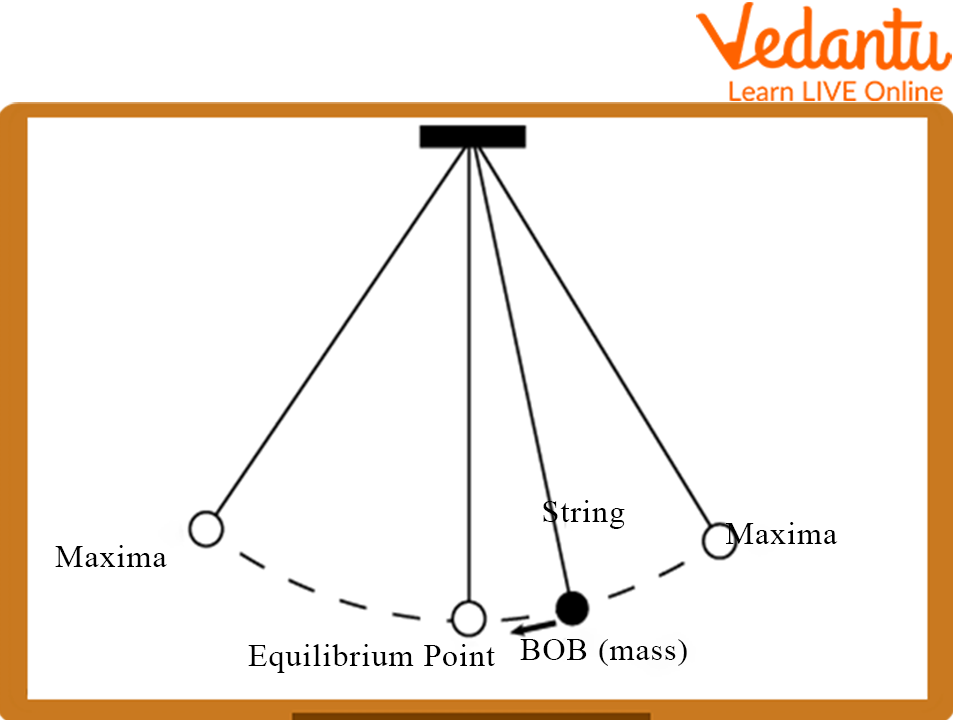
Pendulum’s Path
Explanation of How a Pendulum Moves
The pendulum's path and speed of movement are usually determined by the earth’s gravitational force as well as the size of the string the bob is attached to. As the pendulum moves over time its displacement and speed decrease until it stops back at its Equilibrium position. The cause for the pendulum stopping is air friction or resistance.
As the swing of the Pendulum is an example of Periodic Motion (it is constant), the path of the pendulum from point A to Point B, no matter where the points are located on the path, will always take the same amount of time.
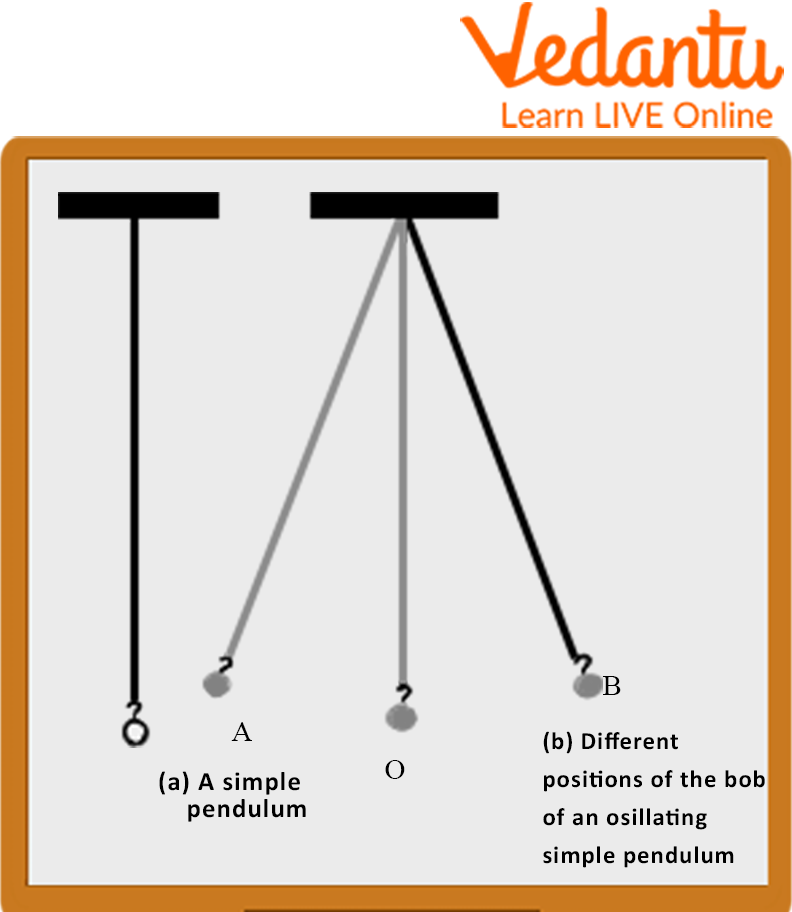
Movement of a Pendulum
Types of Pendulums
There are 4 types of Pendulums
1. Simple Pendulum
A simple pendulum is a weight on the end of a string, rope or wire that swings back and forth above its pivot. The time taken to complete one cycle of swinging motion varies according to its length.
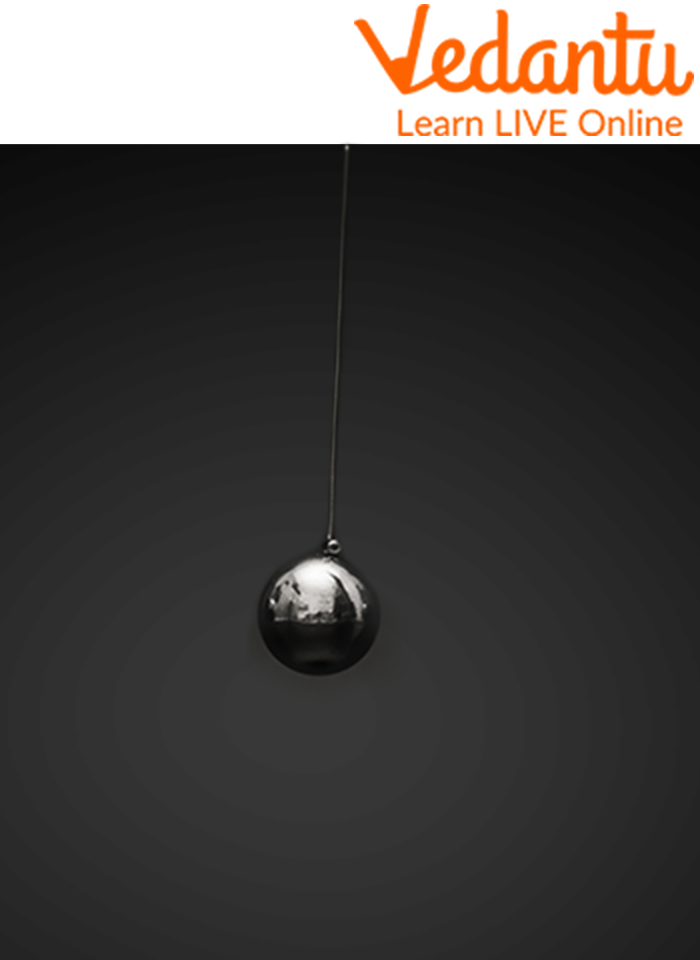
Simple Pendulum
2. Foucault Pendulum
Foucault's Pendulums were created by suspending a long metal rod from the ceiling of the laboratory so it just barely touched the floor and then set it in motion.
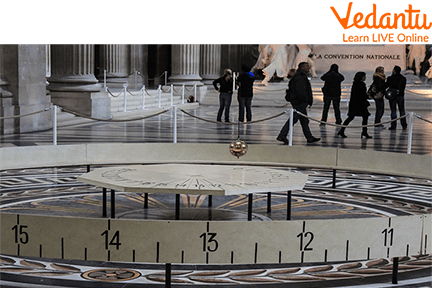
Foucault Pendulum
3. Torsion Pendulum
A torsion pendulum is a type of simple harmonic oscillator with a vertical bar suspended from its centre by a thin, rigid rod and free to rotate around the support. It is related to but different from a conventional pendulum, which has two pivot points rather than one.

Torsion Pendulum
4. Physical Pendulum
A physical pendulum is a weight suspended from a rigid bar so that it swings about its axis under the influence of gravity; it usually has just one point of support or anchor attached to that bar, called the weight's centre.
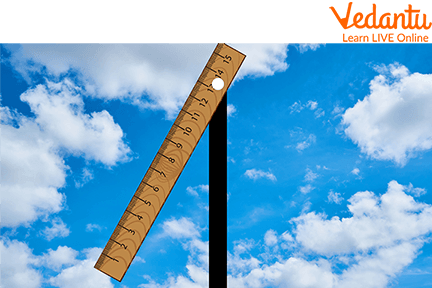
Physical Pendulum
Pendulums in Clocks
Pendulums were added to clocks in the 1600s to make clocks more accurate. As the Pendulum swings at a regular rate, it keeps the other parts of the clock also working at the same rate. In Pendulum Clocks the movement of the hands of the clock is dependent on the swing of the pendulum.
Pendulum Reading
Pendulums can also be used for objects and processes other than clocks and telling time. Pendulum reading refers to the use of a pendulum for spiritual or psychic processes or rituals. Some of the most common ones used are - using a pendulum to decide between two difficult options, using a pendulum for hypnosis, etc.
Interesting Facts About Pendulums
Some interesting facts about pendulums include:
Pendulums were discovered by Galileo
Jean Foucault was a scientist who used the pendulum to prove that the earth rotates on its axis. The kind of pendulum he used was named the Foucault Pendulum after him.
Pendulums were added to clocks in the year 1660 by a Dutch Scientist called Christain Huygens
Summary
We have learnt about Pendulums, their working, how to read pendulums, the Pendulum path and much more. Now we know that Pendulums are in their simplest form a string with a weight called the bob attached to it on one end that swings forward and back in respect to its resting place. The pendulum moves in a constant periodic motion and the speed of this movement as well as the distance reduces due to air friction. Pendulums can be used in experiments as well as be used in clocks. Pendulums can also be used for psychic or spiritual purposes such as pendulum readings. We hope you enjoyed reading this article. In case of any other doubts, feel free to ask in the comments.
FAQs on How does a Pendulum Work?
1. What type of Pendulum is used in a clock?
A physical pendulum is used in a clock. A physical pendulum includes a rod connected to a bob which swings the same way as a simple pendulum. However, in a physical pendulum, the weight is not accumulated in the bob but distributed evenly in the rod. The movement of this physical pendulum to and fro causes the hands of the clock also to move.
2. How did a Pendulum help prove that the Earth rotates on its axis?
Jean Foucault used a pendulum to prove that the earth rotates on its axis. He, using a thick wire attached to a dome on one end and a heavy bob on the other, highlighted that the movement of the pendulum traced a line in the air that changed direction as the day progressed. Since no one moved the pendulum he concluded that it was the Earth that was moving! A type of Pendulum is named after him as well.
3. How can you use a pendulum for a spiritual or psychic purpose?
Pendulums made of certain materials such as glass, crystals, wood, etc can be used for psychic or spiritual purposes. Pendulum readings can be done to find yes or no answers to questions related to difficulties one is facing in life. To do so one must choose the right kind of pendulum and then designate certain answers to its movements and then prepare specific questions. After asking the question, the direction in which the pendulum moves gives the answer.









